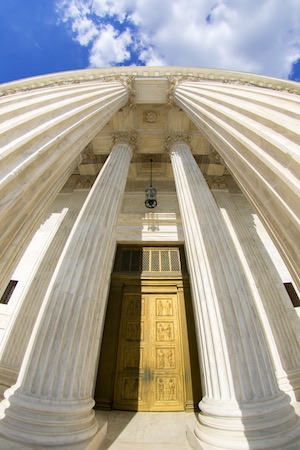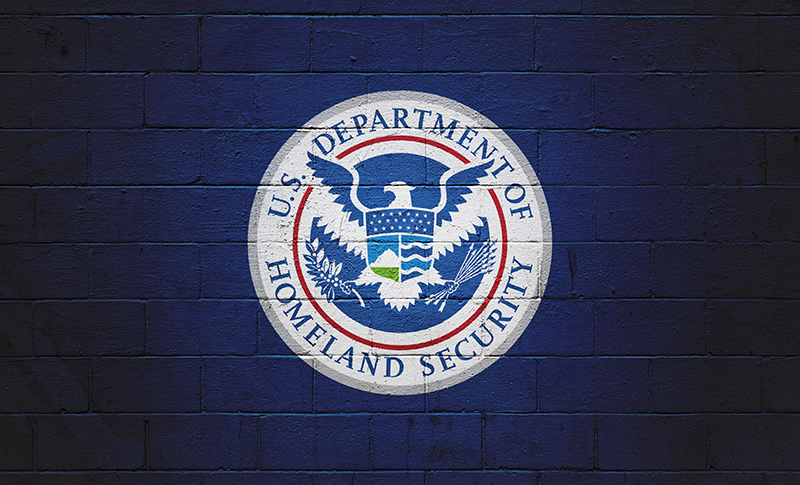Justices Seem Split Down Party Lines as Chevron Nears Chopping Block
“Justice Gorsuch said that Chevron is a recipe for instability, since administrative agencies change leadership so often and their interpretations of statute tend to flip flop.”
The U.S. Supreme Court heard oral arguments today in two cases that are challenging the so-called Chevron deference doctrine, which says courts should defer to administrative agencies’ interpretation of the statutes delegated to them when there is an ambiguity. While the conservative justices’ questioning largely leaned in favor of scrapping the doctrine, Justices Kagan, Sotomayor and Jackson pushed back on the petitioners’ arguments, predicting chaos, and the U.S. Solicitor General said overruling such a foundational doctrine would result in “endless litigation.”
The Petitions
A group of herring fishermen first petitioned the High Court in November 2022 asking the Court to consider: 1) whether the Magnuson-Stevens Act (MSA), which governs fishery management in federal waters and says that the National Marine Fisheries Service (NMFS) can require vessels to carry federal observers onboard to enforce the agency’s regulations, also authorizes the NMFS to require that the vessels pay the salaries of those monitors; and 2) whether the Court should overrule Chevron.
In the 1984 ruling in Chevron, U.S.A., Inc. v. Natural Resources Defense Council, Inc., the Supreme Court held that a court “may not substitute its own construction of a statutory provision for a reasonable interpretation made by [the agency charged with administering the statute],” where the statute is ambiguous. The decision established a two-step test in which a court must first “assess whether the statutory language is ‘clear’ and, if so, give effect to the clear terms” and “if the statutory language is ‘silent or ambiguous,’ then—at step two—a court is prohibited from resolving the legal question itself as it would in any other case, and instead must defer to the agency’s interpretation.”
In response to the petition, the Secretary of Commerce, Gina Raimondo, said the case doesn’t warrant review because the district and appellate courts’ view that NMFS’s interpretation of the statute was “at least reasonable” was correct. But in May, the Court granted the petition, limited to Question 2.
In their opening brief, the fishermen argued that ever since the Chevron decision, “judges, litigants, and scholars have struggled not only to apply Chevron, but to reconcile it with the Constitution, the Administrative Procedure Act (APA), and the historical record.” While it is on the books, the brief argues, administrative agencies will continue to abuse their power.
Then, in October 2023, the Court added another case to its docket challenging Chevron, explaining that it would hear Relentless, Inc. v. Dept. of Commerce in tandem with the Loper Bright case, since the two are almost identical.
Around 60 amicus briefs have been filed in the Loper Bright case. In one joint brief filed by Patent and Trademark Attorneys, Agents, and Applicants for Restoration and Maintenance of Integrity in Government (PTAAARMIGAN) and US Inventor in support of neither party, the amici are asking the Court to reaffirm Chevron deference but to clarify that it should only apply “when an agency acts within the substantive and procedural limits set by Congress.”
According to the amicus brief, while it seems like the Secretary of Commerce in this particular case “did everything by the book,” the U.S. Patent and Trademark Office (USPTO) often “promulgates regulations without the public participation and vetting required by the Administrative Procedure Act, Paperwork Reduction Act, 44 U.S.C. § 3501 et seq., and Regulatory Flexibility Act, 5 U.S.C. § 601 et seq.” Furthermore, when the Office has been challenged in the past on such moves, the agency uses Chevron as a cover. “The USPTO’s neglect of rulemaking procedure leads to regulatory costs that exceed $ 1 billion per year,” says the brief, citing an article by the brief’s author, David Boundy of Potomac Law Group.
Arguments: Defining Ambiguity, Avoiding Instability
During today’s argument, Justices Gorsuch, Alito and Kavanaugh seemed particularly skeptical of the need to keep Chevron, with Justices Thomas and Coney-Barrett not far behind. Justice Gorsuch suggested that the Skidmore-Mead framework is sufficient, for example, and better suited to the problem of solving ambiguities in statutory interpretation because it gives the courts the final say.
Skidmore v. Swift & Co., 323 U.S.134, 140 (1944) said:
“[T]he rulings, interpretations and opinions of [an agency], while not controlling upon the courts by reason of their authority, do constitute a body of experience and informed judgment to which courts and litigants may properly resort for guidance. The weight of such a judgment in a particular case will depend upon the thoroughness evident in its consideration, the validity of its reasoning, its consistency with earlier and later pronouncements, and all those factors which give it power to persuade, if lacking power to control.”
Then, in United States v. Mead Corp., 533 U.S. 218 (2001), the Court reaffirmed Skidmore but suggested that courts also could consider additional factors about the agency’s expertise.
“Together, Skidmore-Mead reinforced the principle that a federal court does not abdicate the job of saying what the law is by deferring to an agency’s determination, so long as relevant factors evidence that the agency is in a superior position to interpret a statute that Congress charged it with implementing,” wrote Judge Susan Braden in a January 2021 article for IPWatchdog.
Roman Martinez, arguing for Relentless, Inc., and Paul Clements, arguing for Loper Bright, both said that Skidmore-Mead should not be considered a deference doctrine but rather that it just teaches giving weight to the agency and would be a more appropriate rubric to apply. But Justice Kagan said Skidmore is not “a doctrine of humility” and that blowing up Chevron, Kisor v. Wilkie, 139 S. Ct. 2400, 2415 (2019) and stare decisis by overturning its own precedent would be ill-advised.
Arguing on behalf of the Department of Commerce, U.S. Solicitor General Elizabeth Prelogar urged the Court not to overrule such a foundational doctrine and said the petitioners have not proven the exceptional circumstances required to do so.
“The application of deferential standards of review doesn’t constitute impermissible bias,” Prelogar said. “Important decisions could be upended and open to challenge. That profound disruption is unwarranted. Congress has legislated for decades with Chevron as the background rule.”
But Justice Gorsuch said that Chevron is a recipe for instability, since administrative agencies change leadership so often and their interpretations of statute tend to flip flop.
The conservative justices also repeatedly came back to the question of how to define ambiguity so as to determine when to reach step two of Chevron. “Some judges say they’ve never found an ambiguity and others say they find them all the time,” Justice Gorsuch said, adding that over a dozen judges have asked the Court to overrule Chevron.
Justice Kagan challenged Martinez to consider “the next big piece of legislation on the horizon,” which she guessed would be a bill on artificial intelligence (AI) that might include creating an administrative AI agency. “There are going to be all kinds of places where Congress has left a gap,” Kagan said. “Congress knows things about different institutions and that this Court and lower courts are not competent with respect to questions that will come up on AI.”
Justice Jackson raised the question of separation of powers danger, expressing concern about judges deciding what the agencies should be doing. While both sides agreed that judges should be deciding legal and not policy questions, Jackson said that distinction is not always that easy to make. “I’m concerned judges are going to look at all of the questions related to a statute and consider them legal,” she said.
The justices also considered what effect overturning Chevron would have on the 77 cases that have been decided based on the doctrine. While the petitioners argued stare decisis would apply and thus the vast majority of those decisions would not be undermined, several of the justices and Prelogar disagreed, predicting potential chaos for the courts.
Chevron‘s Last Rites?
Commenting on the arguments today, Chad Landmon of Axinn, Veltrop & Harkrider LLP said that expert predictions that a majority of the Court will overturn Chevron were reinforced by today’s proceedings and that Chevron may be on “its last legs”:
“There was certainly a lot of discussion as to what it even means for a statute to remain ambiguous after all of the tools of statutory construction have been utilized, and there were more than a few questions as to whether Chevron deference provides more or less stability in regard to what the legal regimes are that govern industry action,” Landmon said. “At the end of the day, it seems like Chevron is on its last legs, and we can expect to see a wave of litigation challenging agency decisions after Chevron’s demise.”
Read all the briefs here:
Loper Bright
Relentless, Inc.
Image rights acquired by AdobeStock






